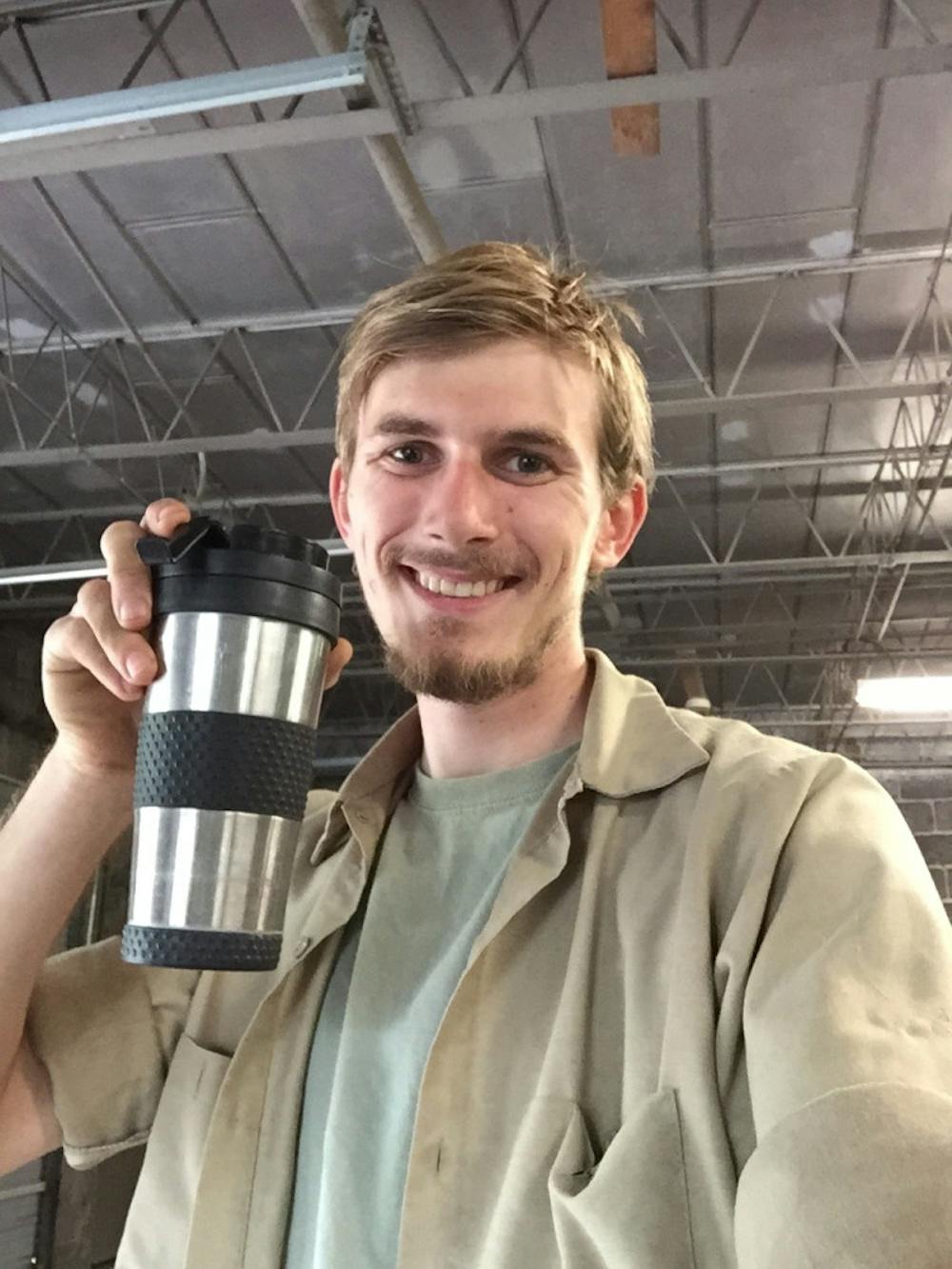By: Anna Jankovsky
Grad Student Interview: J.J. CrumplerIn the Institute for the Environment and Sustainability (IES) here at Miami University, students pursuing graduate degrees engage in many research projects in and around the community. One of the current projects is the inventory of the Elk Creek watershed for the Butler Soil and Water Conservation District. I sat down recently with one of the grad students involved with this project to learn more.
J.J. Crumpler obtained his undergraduate degree in history from Centre College in Kentucky, but has now come to Miami to join the graduate program in the Institute for the Environment and Sustainability.
When I asked him about this dramatic leap in academic concentration, he explained that it came about when he joined AmeriCorps. In previous jobs, he says, “I wasn’t very happy doing the work that I was doing.” After reading a listing for the AmeriCorps conservation corps in Montana, Crumpler says, “I was like ‘I want to do that!’.”
Now, after serving with AmeriCorps in both Montana and Texas, he has come here to Miami, and has joined the team of graduate students collecting information for the watershed inventory of the local Elk Creek.
“Water is important,” he says, beginning to explain the function of his team’s research. “And where we get our water is important.” However, the lakes, rivers and streams that act as the essential source of water to all living things in an area are not always very clean: “Unfortunately the water sources that creatures need to survive… are hyper-polluted,” Crumpler says.
This is where the watershed comes into the picture. A watershed consists of all of the areas that drain into a source of water. To picture the Elk Creek watershed, he explains, “think of all the sources, all the tributaries that feed into Elk Creek.” The problem is that with the water that drains into the creek, there can also come pollutants.
The research project involves collecting an “inventory” of this watershed, which, according to Crumpler, is a “general checklist, basically, of everything that the Ohio EPA wants for a clean watershed.”
“We take the data of soil tests and put it on a chart. We take the data of water samples and we put that on a chart. We take the data of pollutant sources and we put that on a chart. We take data from stakeholders…” The process is, in simplest terms, a very thorough survey of every factor that can contribute to the contents Elk Creek’s water, right down to the people who have stakes in the water’s purity.
As for the point of all of this data compilation, Crumpler explains, “watershed inventory is basically a way to define a problem.” While there could be issues with the water in Elk Creek, it is hard to determine what, if any, the problems are without a full inventory of the watershed. Therefore, Crumpler puts the main purpose of the inventory project in these terms: “we are helping identify any potential problems for this particular watershed in this particular situation and drawing the lines that help connect it to people like you and me.” That is, drawing the lines that can eventually be used to identify if any problems exist in Elk Creek.
Collecting data on all of these factors to compile in the inventory is a very detailed job. In order to compile all of the factors, a lot of research work is necessary. The inventory even includes the consideration of governmental regulations that affect the watershed which need to be collected by the research team. “We have to go and check what are the requirements on the federal, state, and local level which requires a lot of reading.”
The reading is a theme in the work that this team does. Much more research is involved in the project than field work, Crumpler says, giving another example: “I’ve never done any pollutant source work before so I’m having to educate myself as to what pollutants are common and what pollutants are uncommon in watersheds...” Because of this, he says that he is more or less learning on the job - “but that’s part of the purpose of a master’s program - to get your feet wet.”
When I ask him what the average Miami student can learn from his project and personal story, he thinks for a moment before he replies. He draws from his experience in the AmeriCorps conservation projects as well as from his experience with the Elk Creek watershed for his answer. He states that the biggest takeaway is the lesson that “there are a lot of ways to become involved with the environment and sustainable issues and concerns.” Even if the inventory, with its extensive research and compilation of data, is less glamorous than fieldwork, it is still necessary. There are countless different forms of helping with the environmental effort. “Thankfully there are a lot of people on the planet,” he says, and these people are capable of contributing.

